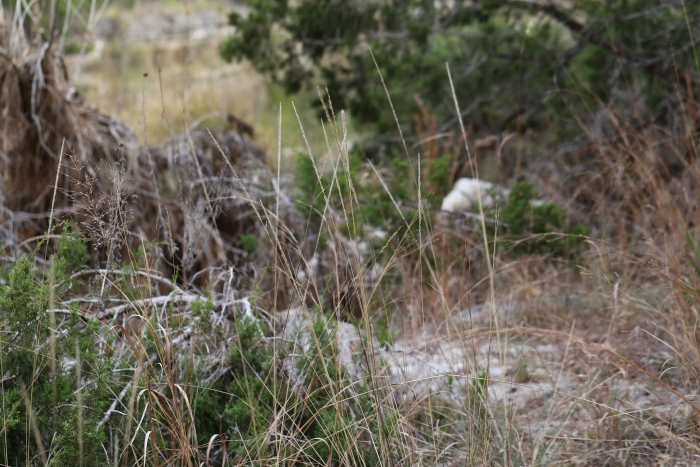Lindheimer’s Muhly
(Muhlenbergia lindheimeri)
Lindheimer’s Muhly (Muhlenbergia lindheimeri)
/
/

Nick Loveland
Public Domain
Image By:
Nick Loveland
Recorded By:
Copyright:
Public Domain
Copyright Notice:
Photo by: Nick Loveland | License Type: Public Domain | License URL: http://creativecommons.org/publicdomain/zero/1.0/ | Rights Holder: Nick Loveland | Publisher: iNaturalist | Date Created: 2020-03-13T17:09-07:00 |






























































Estimated Native Range
Summary
Muhlenbergia lindheimeri, commonly known as Lindheimer’s muhly, is a perennial bunch grass native to the Edwards Plateau in Texas and parts of northern Mexico. It thrives in open woodlands and grasslands, often on limestone soils. This species typically grows 3-6 feet tall, forming dense clumps of slender, erect stems. The inflorescences are showy panicles up to 50 centimeters long, often purplish in color, with grayish spikelets that appear in late summer to fall. The foliage is a bluish-green, adding to its ornamental value.
Lindheimer’s muhly is valued for its drought tolerance and low maintenance requirements, making it an excellent choice for xeriscaping. It serves as a green screen, offering an alternative to Pampas grass, and is effective for erosion control and water retention. The grass provides nesting material for birds and is attractive to wildlife. It is commonly used in urban landscapes, naturalized areas, and as an accent in garden borders. Lindheimer’s muhly prefers full sun and can tolerate a range of soil types, provided they have good drainage. It is generally free from serious pests and diseases but can be affected by rust in some conditions.CC BY-SA 4.0
Lindheimer’s muhly is valued for its drought tolerance and low maintenance requirements, making it an excellent choice for xeriscaping. It serves as a green screen, offering an alternative to Pampas grass, and is effective for erosion control and water retention. The grass provides nesting material for birds and is attractive to wildlife. It is commonly used in urban landscapes, naturalized areas, and as an accent in garden borders. Lindheimer’s muhly prefers full sun and can tolerate a range of soil types, provided they have good drainage. It is generally free from serious pests and diseases but can be affected by rust in some conditions.CC BY-SA 4.0
Plant Description
- Plant Type: Grass
- Height: 4-6 feet
- Width: 3-4 feet
- Growth Rate: Moderate
- Flower Color: N/A
- Flowering Season: Fall
- Leaf Retention: Evergreen
Growth Requirements
- Sun: Full Sun
- Water: Low, Medium
- Drainage: Medium
Common Uses
Bird Garden, Border Plant, Butterfly Garden, Deer Resistant, Drought Tolerant, Erosion Control, Low Maintenance, Rock Garden, Salt Tolerant, Street Planting
Natural Habitat
Open woodlands and grasslands, often on limestone soils
Other Names
Common Names: Blue Muhly, Lindheimer’s Muhly
Scientific Names: , Muhlenbergia lindheimeri, Epicampes gracilis,
GBIF Accepted Name: Muhlenbergia lindheimeri Hitchc.